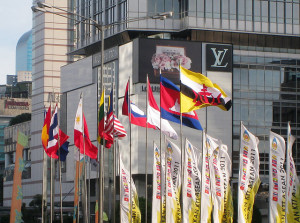 The Association of Southeast Asian Nations (ASEAN) region can fulfill its potential to transform into a global economic powerhouse if its 10 member countries can set aside domestic interests to remove the last standing non-tariff barriers (NTBs) to their unification, according to a business services provider.
The Association of Southeast Asian Nations (ASEAN) region can fulfill its potential to transform into a global economic powerhouse if its 10 member countries can set aside domestic interests to remove the last standing non-tariff barriers (NTBs) to their unification, according to a business services provider.
In a briefing paper, Amsterdam-based TMF Group said international businesses are eyeing the potential of the growing region, but also questioning its capability to take the necessary step to bring down NTBs.
ASEAN has a combined GDP worth US$2.5 trillion. If ASEAN were one economy, it would be the seventh largest in the world and is projected to rank as the fourth largest economy by 2050. Much of the attractiveness of the region is down to its enormous growth opportunities: a population of 620 million (9% of the world), home to the third largest workforce in the world (behind China and India) and average economic growth rate of around 5.4% per annum since 1980.
“2015 is set to be a defining moment for Southeast Asian economies as the deadline for the formation of the ASEAN Economic Community (AEC) looms,” said Paolo Tavolato, TMF Group’s head of APAC. “Given the great range of diversity in economic development, political systems, cultures and religions, many are wondering if the regions can actually be integrated into a unified economy.”
He observed that as China’s population ages and the workforce becomes more expensive, “ASEAN can offer the full value chain to multinational companies, from, say, research and development in Singapore, to labor-intensive manufacturing in Indonesia and Vietnam, supported by business process outsourcing in the Philippines.”
He added that the diverse range of industrial specializations in ASEAN would make the region suitable for a wide array of investors.
The paper notes that Singapore and Malaysia specialize in electronic products, Thailand is the leading manufacturer of fast-moving consumer goods and processed foods, while Vietnam and Cambodia focus on garments.
Meanwhile, Indonesia, Brunei, and the Philippines are the main producers and exporters of natural resources such as palm oil, rubber, sugar cane, rice, cocoa, timber, petroleum, natural gas, coal, and tin.
“The vertical and horizontal integration of Southeast Asia economies under the AEC would stimulate intra-regional investment, trade and business connections benefitting both foreign and local firms.”
As of April 2015, about 458 out of the total 506 high-priority measures outlined in the AEC roadmap have been fully implemented across all ASEAN countries. This took the AEC’s implementation to 90.5%.
For the remaining deliverables, ASEAN economic ministers have been tasked to identify, prioritize, and implement measures that carry the highest economic impact in a bid to achieve 95% implementation rate by year-end.
“Among the remaining deliverables, the removal of non-tariff barriers is the hardest to implement as most are populist measures designed to protect strategic national industries,” said Paolo. “Challenges remain in the elimination of NTBs such as a single channel for imports, price control measures, natural resource subsidies, and preferential treatment of state-owned enterprises.”
He pointed out, however, that while the withdrawal of NTBs might inflict short-term pain, it would eventually be beneficial as competition will push these industries to move up the value chain and increase productivity.
Studies show that the total removal of tariffs and NTBs in ASEAN could reduce the cost of doing business in the region by 5% and increase its gross domestic product (GDP) by 5%.
Additionally, the establishment of the AEC could generate US$280 billion to $615 billion—equivalent to 5% to 12% of projected ASEAN GDP—in annual economic value by 2030. It is predicted that by 2025, more than half of the world’s consumers would live within a five- to six-hour flight from ASEAN.
Paolo said, “Every step towards creating the AEC tests the commitment and political will of the leaders to sacrifice their national agenda for the common good.”
He added that investors are drawn to ASEAN in hopes of leveraging the region’s emerging consumer market, rising middle classes, and equally increasing spending power.
“All of this makes ASEAN one of the most important consumer markets of the future, and helps pave the way for an ASEAN Economic Community to emerge as a powerhouse of the world economy.”
Photo: Gunawan Kartapranata





